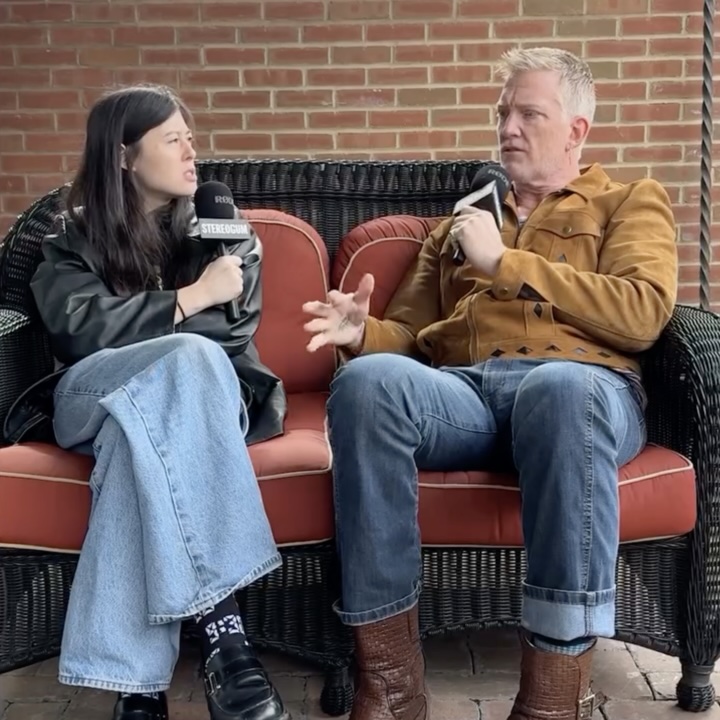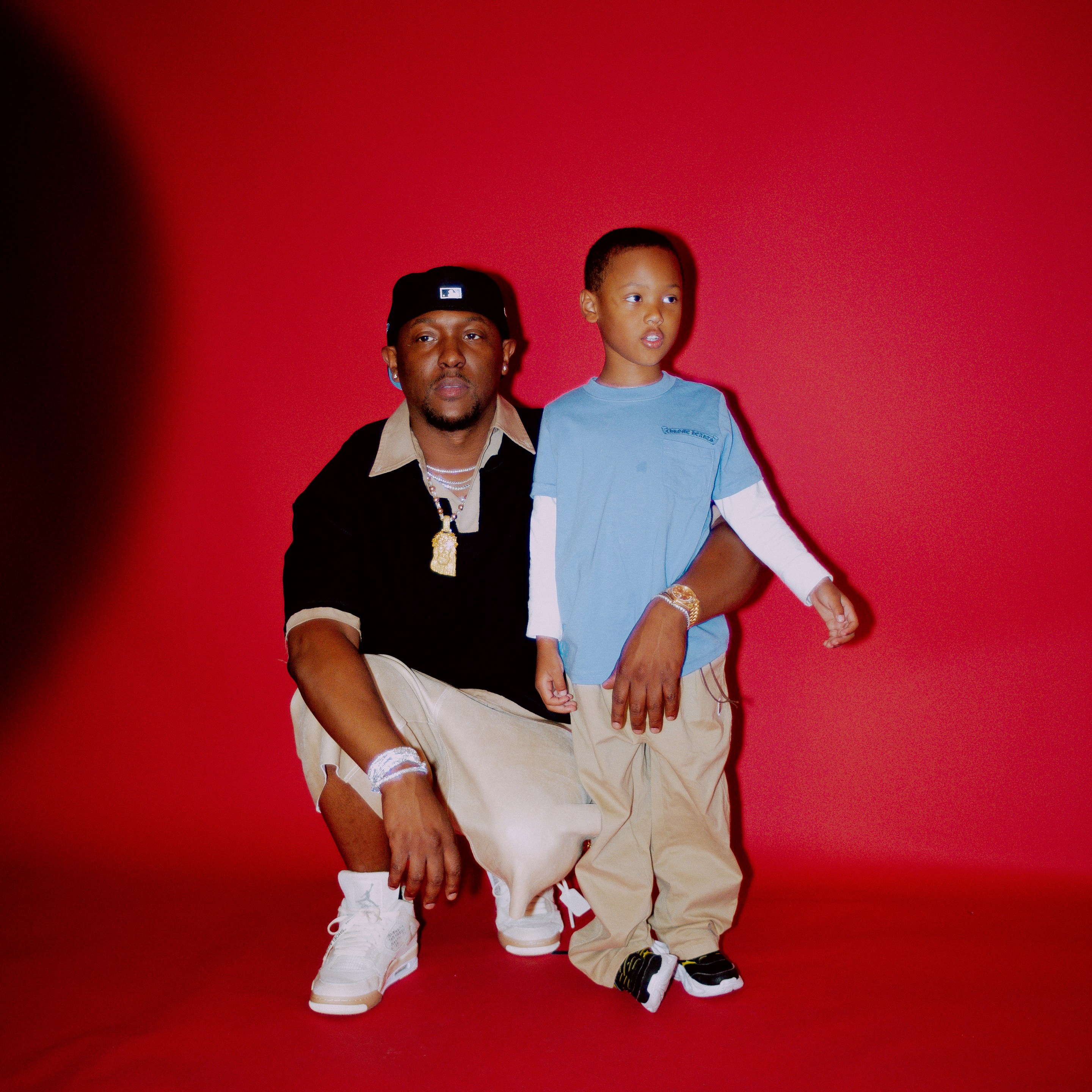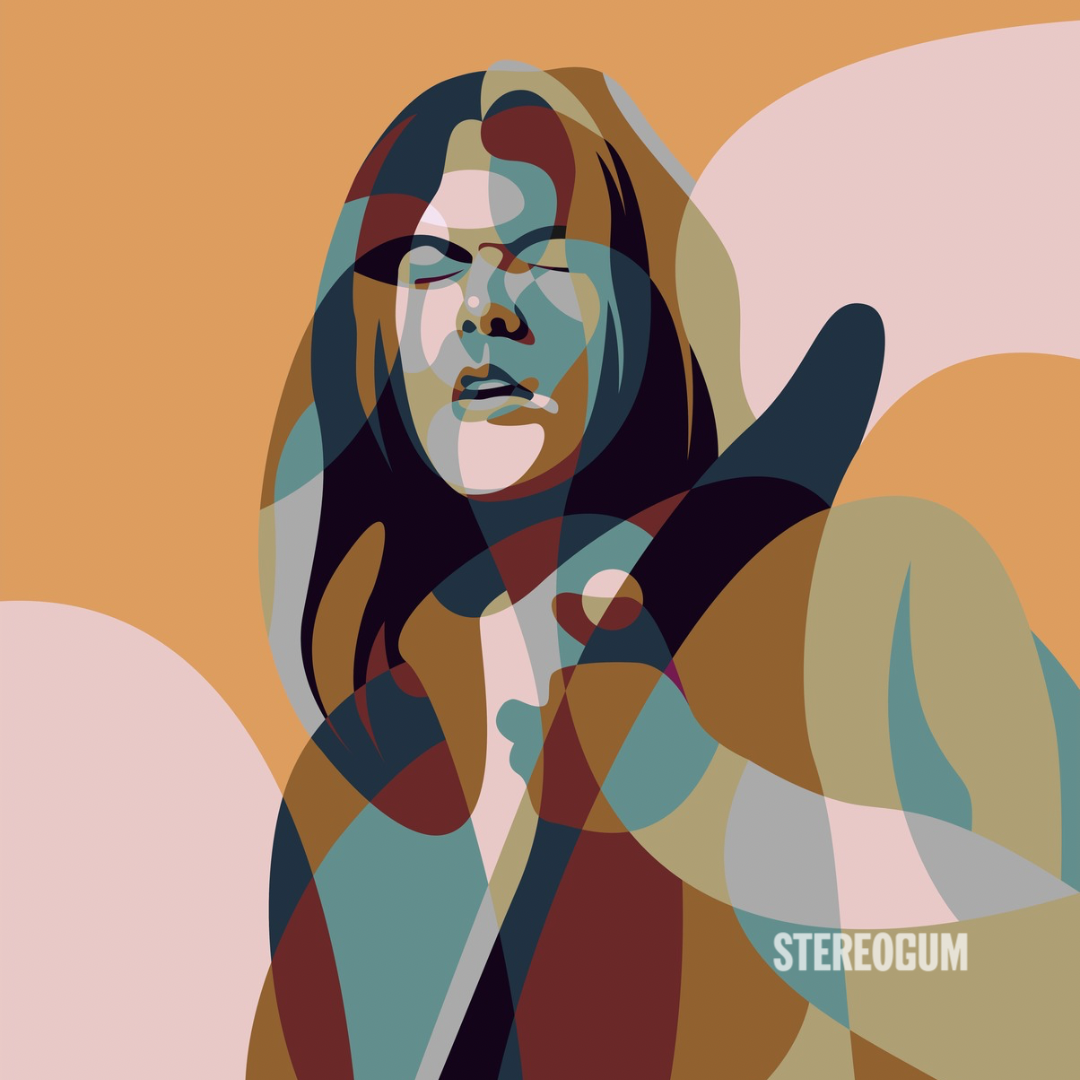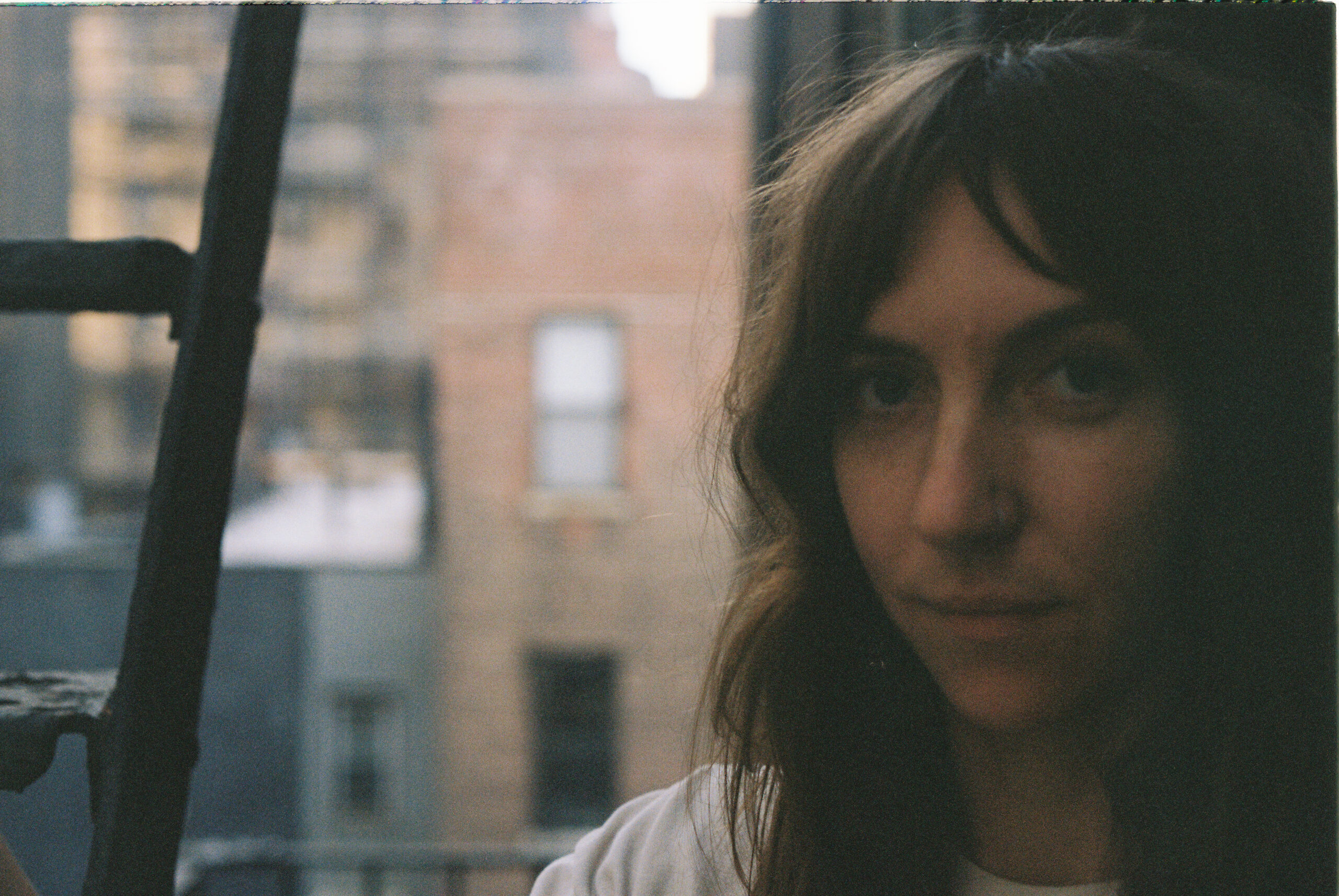This has been a good year for bands making music that might ostensibly be referred to minimalist R&B. In addition to great offerings in that vein from the likes of inc. and Autre Ne Veut, we also have The Ways We Separate from Brooklyn art-synth duo Beacon. We recently premiered the video for “Drive” — which is itself a kind of homage to R&B videos of the past — and I had the chance to sit down with the duo to talk about, among other things, how they aren’t really an R&B band at all (though they don’t mind if you think they might be).
STEREOGUM: How did the two of you start playing music together?
MULLARNEY: We started in … 2010?
GOSSETT: We both went to Pratt. I think we met each other during our first week of classes.
STEREOGUM: What kind of work were you doing?
GOSSETT: I was making mostly paintings.
MULLARNEY: Sculptures and videos, mostly.
STEREOGUM: Were you both doing music?
MULLARNEY: I was. It was slowly becoming a part of my work as well.
GOSSETT: Yeah, I’d been doing music stuff on and off for a while, throughout college.
STEREOGUM: At what point did it start to feel like Beacon started to take off and have a life of it’s own? Did it become a full-time pursuit pretty early on?
GOSSETT: It happened pretty quickly for me. I was in grad school doing my MFA — doing painting and video stuff, multimedia arts — and I remember specifically leaving the studio one night after we’d been mixing one of the early songs and I realized that I’d been making music nonstop for nearly two months but not really doing any other kind of creative work related to school. I pretty much made a decision to leave on that day. I dropped out the next week. For me that was a very big deal. I’d spent an entire summer without making any visual art, which seemed indicative that music is what I needed to be doing.
MULLARNEY: That summer I was working pretty crazy hours doing props and set design for Adult Swim. We wrote that first EP in the middle of the chaos of all that. Once we had mixed it and put it out there, it seemed like it was reaching way more people than we had ever thought that it would. That kind of shifted us into this mental space of taking things more seriously and planning things out.
STEREOGUM: Were you surprised by the success of the early EPs?
GOSSETT: I’m always surprised. It’s such a weird thing … you spend so much time with it and it’s easy to lose your perspective on it after a while.
STEREOGUM: Did you tour a lot for the EPs?
MULLARNEY: >After the first EP came out we went and toured pretty quickly. We’d been performing a lot though even before that. The entire project kind of sprang out of this performance art thing that we’d been doing that was a lot more free-form and experimental. Throughout late 2010 and early 2011 we just tried to book as many shows as possible as a way to get our feet wet as performers.
STEREOGUM: What were those early shows like?
GOSSETT: They were a lot more centered around the visuals. The music was really centered on these large-scale visual installations that we’d been doing. It was usually us in the center of the space with these massive projections happening all around us. The sounds were heavily sample-based and it was much more chaotic. The more we played out the more we started to think that maybe we should actually record some of the material. We kind of started stripping things down and figuring out what it meant to actually make songs and make a good recording, as opposed to the music being just a part of the visuals. Thinking back on it, what we were doing then is really not that far removed from what we do now. There are still visuals involved.
MULLARNEY: We tried to lock in performance spaces as often as possible. We still do, actually. We liked performing in spaces that were more open and more suggestive of performance art, as opposed to music spaces that just felt like venues. That was our way of kind of easing into the identity of being a band.
STEREOGUM: Well, that’s so much more interesting than just playing in clubs. When it came time to make this record, did your approach to writing and recording change much? What is your usual process of making songs?
GOSSETT: It’s kind of consistent with how we’ve worked in the past. We tend to work separately early on, just creating these sketches for songs and sending them back and forth to each other. The process of recording those two EPs really taught us a lot about what we liked and what we didn’t like to do. It was a slow learning curve for us, but it also really allowed us to figure our sound out along the way. This record definitely involved more gear, but more experimentation as well. The EPs had to happen in order to get us to a place where we felt confident and comfortable enough to make a full-length album — for us to have ten songs that we felt good enough about. We really wrestled with these songs and it was a long process to bring them to completely. Still, I am proud of those EPs and they really served a purpose in helping us actually become a band. It’s also interesting to see which songs really resonated with people … and that was helpful in terms of just helping us figure out our own strengths and weaknesses.
STEREOGUM: Was the aesthetic of the record something you’d established from the outset or did it take a while to reveal itself?
GOSSETT: We had some things in mind going in.
MULLARNEY: I think we knew we wanted it to have some more up-tempo moments — not that the record is really up-tempo by any means — but we had an idea of what we wanted. It’s hard to think about, in retrospect, how much of it we really planned. It’s just a matter of getting yourself in the studio with enough songs sketches and enough random ideas that you’ll have plenty of material to play around with. For us, that is about as much planning as you can do. You set aside a nice block of time and you make sure you go in with a bucket load of ideas — and something good will come out of it. That’s what works for us, anyway.
STEREOGUM: Do you have your own studio?
GOSSETT: No, we just kind of work … wherever we can, basically.
MULLARNEY: Yeah, we go into a studio to the mixing and most of the vocals have to be recorded in a studio, but so much of the other stuff we can do at home. Most of our synth stuff can actually be done at home in a bedroom setting.
STEREOGUM: Isn’t that amazing?
MULLARNEY: [laughs] It really is. I don’t know how we’d do it, otherwise. I mean, if it weren’t for the ease of the technology, we probably wouldn’t even be a band.
GOSSETT: Even thinking about how things were just ten years ago … it’s really astounding.
STEREOGUM: How long did it take to finish the record?
MULLARNEY: It’s funny … some of the parts — like the vocal melody from “Bring you Back” — were written back in 2010. In terms of how far back we reached, some of the songs go back to our very earliest days. The recording itself was done in about three months, but that was with us working on it in some capacity basically every day.
STEREOGUM: This record seems to be very much about separation and isolation. How did they lyrical content of the record present itself?
MULLARNEY: The lyrics are almost always a direct dialogue with the music as it’s being written. I write some lyrics with melodies — sometimes written on a piano — and then they are later taken into Beacon space. Other times the lyrics come really organically between the two of us.
GOSSETT: Often as we’re recording and working on the songs, each of us will kind of just be sitting on different sides of the room making notes and developing different ideas about the songs. The subject matter often presents itself in that way.
STEREOGUM: There is such a fascination right now with bands making this very ephemeral, kind of minimalist R&B, which is a term that often gets used to describe your music. Does that make sense to you?
GOSSETT: It makes a little bit of sense. I think it’s a fairly small part of what we do — it’s an element that kind of gets collaged in with all these other things we do. It’s interesting — Thomas’ sensibilities are not at all aligned with that kind of music. He never really listened to that kind of music.
MULLARNEY: My reference points are actually a lot different than what people might assume. All of those things — like, singing in a falsetto or other things that you might consider the standard tropes for an R&B singer — those were not things I was ever thinking about or trying to emulate. At the same time, our music is quite minimal and we do really love super rich bass, which is something that kind of lives inside hip hop and R&B records, so it’s not a huge leap for people to see that in our music — and it’s not as if we reject that. Still, my personal influences really come from things like IDM and other electronic music — that sort of world. That’s the music that influences me the most, at least textually. But, you know, it is timely right now to be making that kind of music and if we can be considered a part of that, I don’t really mind it.
STEREOGUM: Thomas, do you feel more comfortable now as a singer? It seems like your voice is a lot stronger — more focal — on this record than it was in the earlier EPs.
MULLARNEY: Definitely. I was really experimenting on the early material, playing around with masking my voice in different ways. Now I really like to explore the different ways that I can attack a song in terms of my vocal range. Also, I’m just more confident than I was before. That’s just a natural thing that happens the longer you do something. If you can keep those walls from building back up, the better off you are.
///
[videoembed size="full_width" alignment="center"][/videoembed]
Beacon’s The Ways We Separate is out now on Ghostly International






